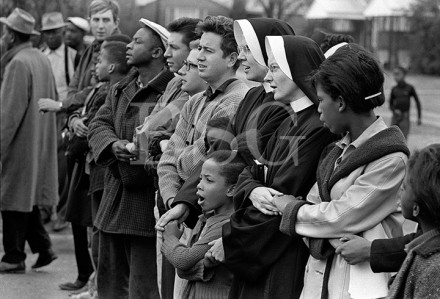The Newesletter is published by Spirituality Shoppe: A Center for the Study of Christian Spirituality
Print or download fully-formatted version
The NewesLetter Vol 27 no. 2 | November 2023
Christian communities have been connecting at a distance for a long time. I’m going to be reading my presentation here because if I got to talking off the cuff it would go way too long. You see, in the process of preparing for this talk I discovered a gold mine of material on how Christian monasteries and communities networked for the Gospel. Four examples will have to suffice:
1. The Apostle Paul (@ CE 50) and the Practice of Visitation
Sometimes when people ask me about “church”—and just to be obnoxious—I ask them “What church did the Apostle Paul attend? It’s not really a fair question because other apostles settled down in a single spot for the rest of their lives. But the point here is this – Paul traveled: it was his way of life. And his travels were not only about planting communities, but also visiting them, and networking them. In Acts 15:36 we hear Paul suggesting to Barnabas, “Let us go back and visit the believers in all the towns where we preached the word of the Lord and see how they are doing.” Sometimes Paul had traveling companions. Other times he sent his companions to do the visiting themselves. And of course we know that Paul followed-up his visits with letters. He was good at networking. He visited churches he founded—like the one at Corinth—writing them that “I do not want to see you now and make only a passing visit; I hope to spend some time with you” (1 Corinthians 16:7). He informs the church at Rome—a church he did not plant—of his desire to visit them: “I long to see you so that I may impart to you some spiritual gift to make you strong—that is that you and I may be mutually encouraged by each other’s faith” (Romans 1:11–12). Paul was not alone in the ministry of visitation, for we read in the second epistle of John how the author has “much to write you, but I do not want to use paper and ink. Instead I hope to visit you and talk with you face to face, so that our joy may be complete” (2 John 1:12).
By the fourth-century Council of Chalcedon visitation became a standard and official practice among communities of faith. I have a Guide for Visitations of Benedictine Monasteries published in 1994. The practice of folks from one community—or of ininerant ministers—visiting other communities for mutual encouragement is as old as the Christian church itself.
 2. Basil the Great (CE 330–379) and Gatherings
2. Basil the Great (CE 330–379) and Gatherings
Basil “the Great”, following the lead of his elder sister Macrina, founded a monastic community in present-day Turkey in 356. He had visited a variety of monastic expressions and decided to pioneer a monastery tailored for his own environment and culture. Over the years, people asked about community life, and Basil took notes on his responses. Collections of questions with his answers were ultimately published as The Rule (or responses) of Basil. In the longer collection of responses (Question 54), Basil speaks about gathering folks from different communities together. He urges: “It is a good plan that the heads of the communities should meet together occasionally at certain appointed times and places. At these assemblies they should lay before before one another for consideration irregular situations, characters which are exceptionally difficult to deal with, and details of their administration, so that, if any of the leaders be delinquent in any respect fellow-superiors will point it out and that what has been rightly done may be confirmed by their collective testimony.” (Fathers of the Church edition, p. 330, with a couple of my own edits).
As with visitation, the practice of periodic gatherings for encouragement, mutual correction, and even decision-making became a common practice among Christian communities. Indeed, after the foundation of the Cistercians in the eleventh century, regular gatherings of members and/or leaders for a General Chapter—as it was called—was declared normative, influencing even the development of democracy in the centuries to follow.
3. The Early Jesuits (@1540 – 1565) and Letter-Writing
I have already mentioned letter-writing in my comments on Paul. Indeed, the practice of writing letters between circles of friends and connections was important throughout the history of the communities of Christ. Here I simply want to tell you about one classic example from the sixteenth century, the Jesuits (also known as the Society of Jesus). Ignatius of Loyola had a radical conversion and gathered a group of followers. Immediately upon official approval, they took off in all directions, scattering to serve Christ and the church throughout the globe. Exciting, yes, but also a problem. John O’Malley writes in his account of The First Jesuits, “If recruits were to be gained and members retained, they had to be instructed in what the Society was about. . . . Ignatius and his closest associates were keenly aware that the communication of the ideals, goals, and style of the Society did not occur automatically and that it had to be sustained on a consistent and ongoing basis.” O’Malley continues, “This situation accounts for the extraordinary emphasis the Jesuit Constitutions placed on correspondence as a means of achieving “union of hearts.” (John W. O’Malley, The First Jesuits, 62). Correspondence. Letter-writing. The Constitutions declare that, “Another very special help [toward unity] will be communication by letter between subjects and superiors, and their learning frequently about one another and hearing the news and reports which come from the various regions.” [Constitutions, par. 673. Pars. 674–76 specify precisely how this is to be accomplished and who is responsible to see that it gets done]. The Jesuits practiced what they preached. Again, O’Malley writes, “By 1565 the Society numbered about thirty-five hundred members, who were exhorted or obliged to maintain regular correspondence with each other and especially with the Jesuit leadership in Rome. . . . The letters of Ignatius of Loyola alone fill 12 volumes [see p. 9: 7000 letters], constituting the largest correspondence extant of any sixteenth-century figure, none excepted” (John O’Malley, The First Jesuits, 2–3). Some of these letters were copied and sent to the entire membership, probably making them some of the first ministry newsletters in history.
4. The Sisters of Loretto (1970s to today) and Common Tasks
Seventy years ago “sisters” – Catholic women vowed to consecrated life and serving in schools, hospitals, Catholic charities and such – constituted more than 80% of all monks, nuns, friars, and so on in the United States. For reasons much too complicated to explore here, that situation has changed. The number of sisters decreased dramatically. Many had to sell their schools—and the convents/homes attached to them—and move to dispersed housing more conducive to their new ministries. How could they support one another in the midst of this crisis?
One method was to connect around common tasks, to network through ministry. The Sisters of Loretto are specialists in this kind of networking. A 2002 article in the National Catholic Reporter declares, If Loretto Sisters had a middle initial in common, it wouldn’t be “M” for Mary; it would be “N” for Network. Just a couple of examples:
I n the late 1970s Sr. Virginia Williams founded the Loretto Women’s Network, a collection of sisters and friends “committed to act for the empowerment of women.” (see the Loretto Sisters website) They have served as advocates regarding psychological abuse, human trafficking and other issues for many years. Similarly, in the early 1990s Srs. Mary Ann Coyle and Nancy Wittwer founded the Loretto Earth Network, “dedicated to re-establishing right relationships between the human community and the Earth community.” They have developed an extensive collection of Earth Education Resources and are involved in a number of environmental causes.
n the late 1970s Sr. Virginia Williams founded the Loretto Women’s Network, a collection of sisters and friends “committed to act for the empowerment of women.” (see the Loretto Sisters website) They have served as advocates regarding psychological abuse, human trafficking and other issues for many years. Similarly, in the early 1990s Srs. Mary Ann Coyle and Nancy Wittwer founded the Loretto Earth Network, “dedicated to re-establishing right relationships between the human community and the Earth community.” They have developed an extensive collection of Earth Education Resources and are involved in a number of environmental causes.
The practice of inter-community cooperative networking for common cause is a standard practice among sisters today. Jung Eun Sophia Park writes in a 2019 discussion of the life of Catholic sisters, “Today, many communities are involved in cooperative ministries. For example, the Social Justice and Peace Network is composed of twelve congregations and works for social justice and peace on a global scale.” (Jung Eun Sophia Park, Conversations at the Well: Emerging Religious Life in the 21st Century Global World: Collaboration Networking, and Intercultural Living, 67, again with my slight edits).
Celtic monastic settlements communicated and cooperated in the development of education systems in the Middle Ages. Dominicans and Franciscans collaborated in evangelistic ministries. The modern Protestant mission movement provides ample testimony to the practice of communities working together for a common cause. Once again, we see that throughout history, Christians have joined together in creative ways for the sake of the Gospel.
Conclusion
I wish I could tell you about targeted introductions, gift-giving, sharing members or even leaders, and other common practices that contributed to the networking of Christian communities through history. Suffice it to say that inter-community networking is an old and central practice of the Christian faith. Indeed, one might go so far as to say that the Christian church is better understood not as a collection of buildings or institutions, but as a network of communities, connecting with each other in various forms to follow Christ. Hmmm. What might that mean for us today?
